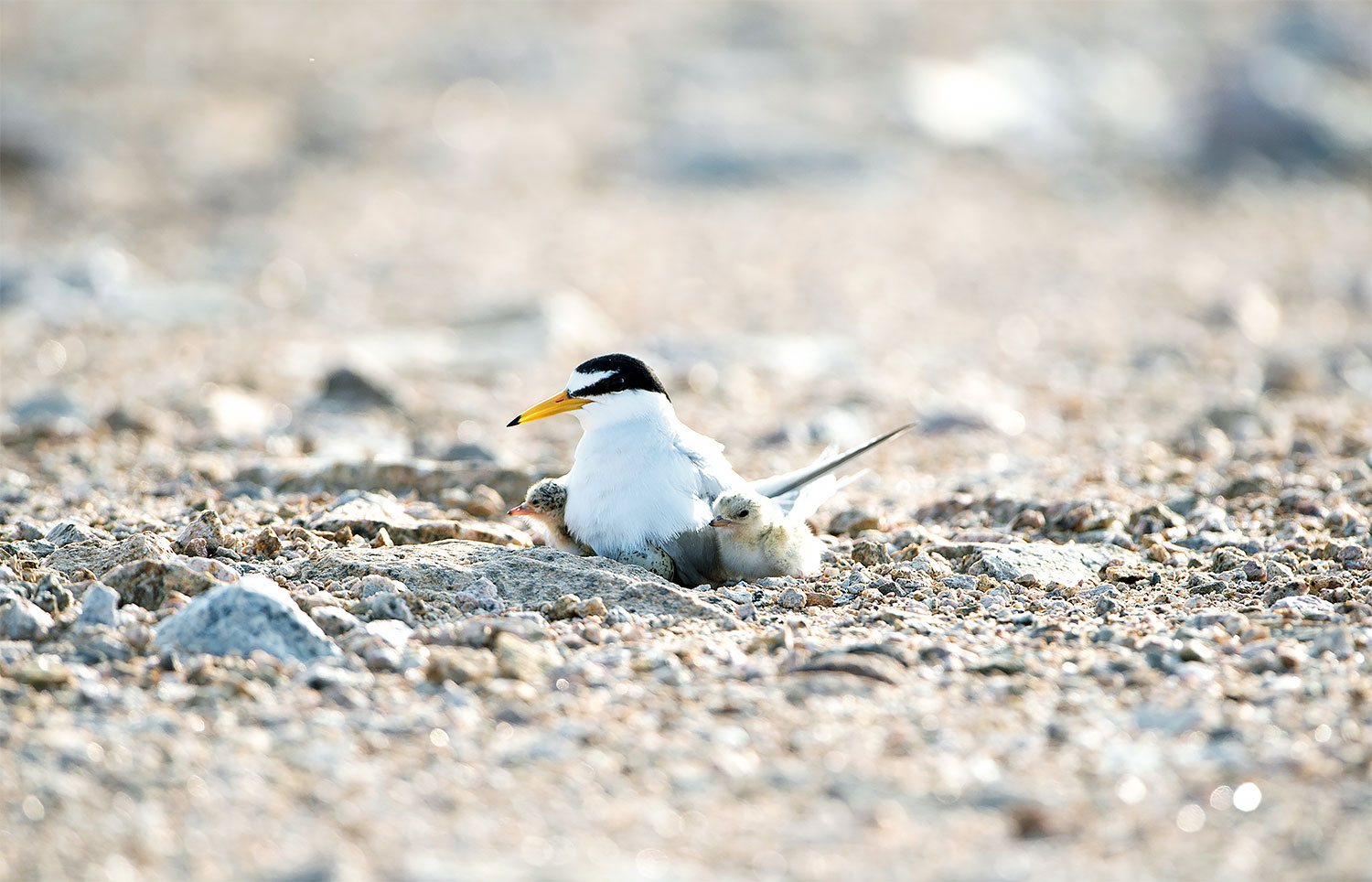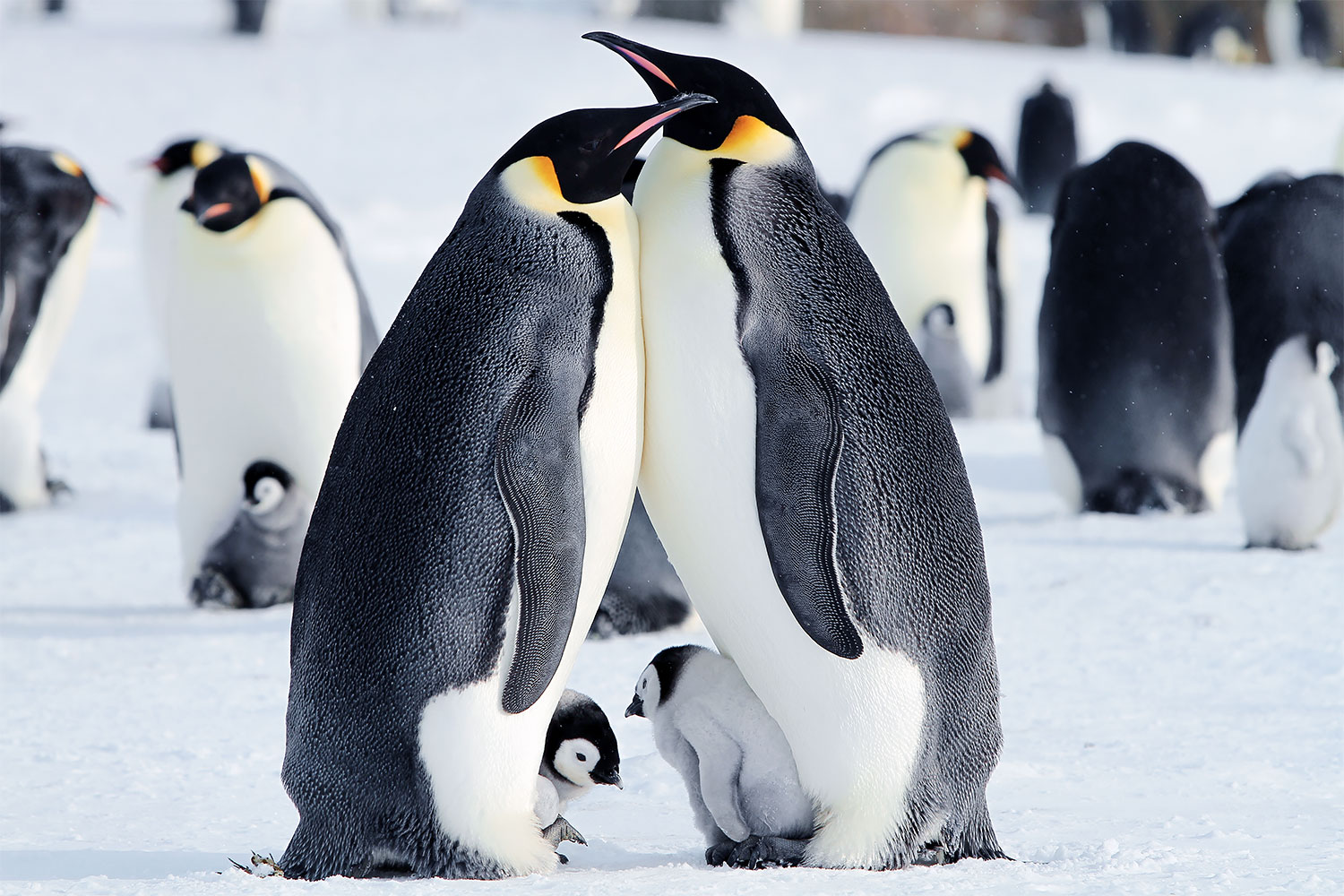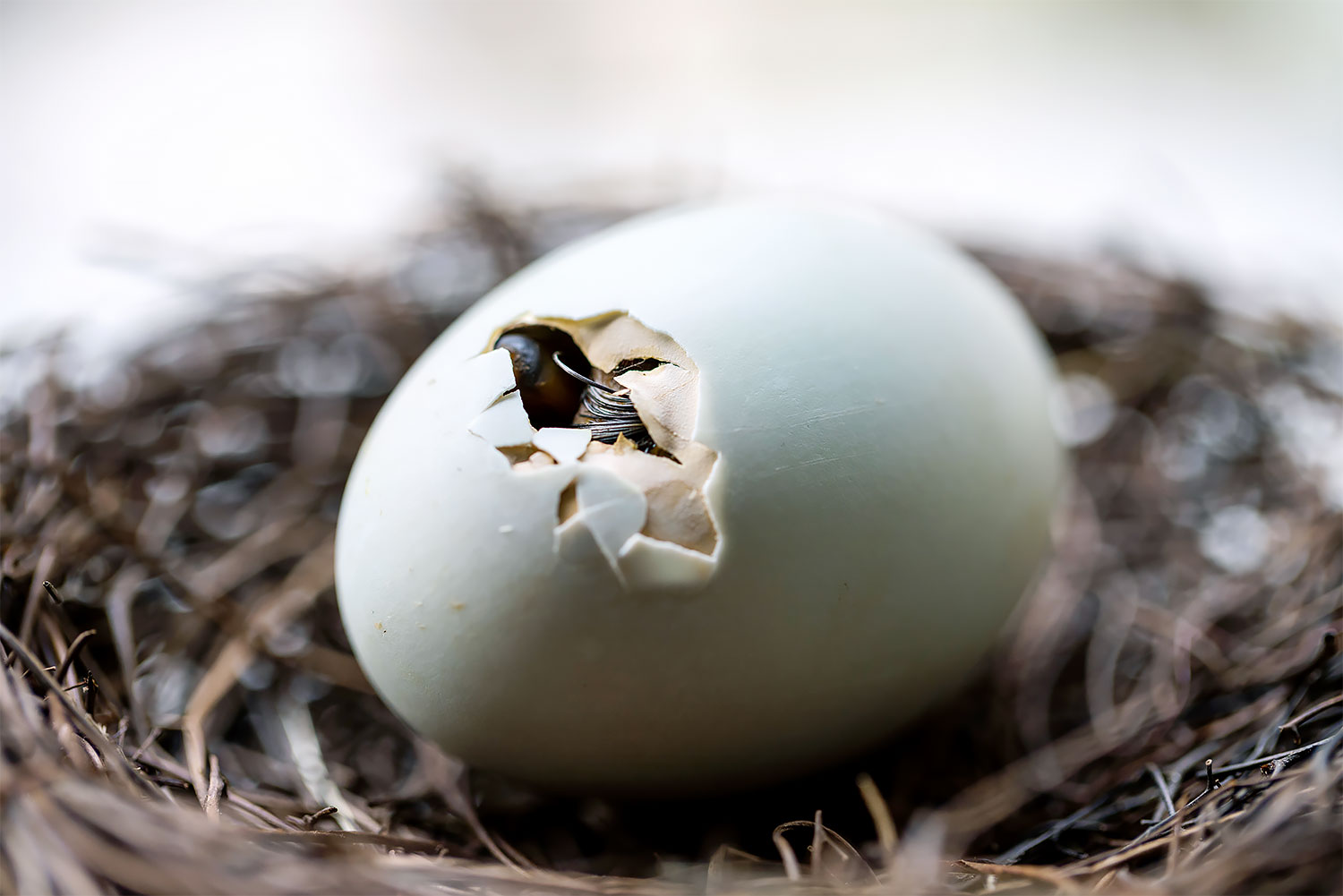Thomas Edison, the king of invention, was curious since he was young. One day, Edison disappeared and his family got in commotion. It turned out that he fell asleep while curling up to brood goose eggs. Contrary to his expectation, however, no eggs hatched. Why did the goose eggs fail to hatch?
Nest: home for the young
Brooding and hatching are the most important part of avian reproduction. Making a nest is the first step to incubate eggs. Just as a man needs a shelter from rain and wind, a bird too needs a nest where it can protect its eggs from natural enemy and raises its soon-to-be-born baby birds. For this reason, birds put all their efforts into making their nests. The parent birds scrutinize candidate spots and choose the best material including their own feathers for the nest.
There is tremendous diversity in nest location and structure. Nidifugous birds (from Latin nidus for “nest” and fugere “to flee”; aka precocial birds) recognize their mother as soon as they come out of eggs and follow her. As they leave the nest shortly after hatching, their nests are built in soil or over pebbles by the water or in crevices. On the contrary, nidicolous birds (from Latin nidus for “nest” and colous “inhabiting”; aka altricial birds) are naked and blind when they hatch. Without the parents’ protection, they cannot survive. So they stay in the nest for a long time and receive care and protection from their parents. That’s why nidicolous birds such as doves, owls, swallows, and woodpeckers build strong nests in safe places, unlike nidifugous birds.

Woodpeckers, which are nidicolous birds, nest in tall tree cavities. When they dig their nests, they meticulously consider every aspect of the tree: species, direction, height, and thickness. Woodpeckers build their nests in the height more than a five-story building and cover the entrance to the nest with branches to avoid attacks of the enemies like birds of prey and to take shelter from the storm. They do not spare an enormous amount of time and effort until they complete the nest.
Sometimes, the nest built by a woodpecker gets taken by other birds that cannot make their nests by pecking trees. For example, nuthatches build their nests by reconstructing woodpeckers’ nests. As nuthatches are small and weak, they search for abandoned woodpeckers’ nests at the end of winter, before other birds’ breeding season comes. When they find one, they go inside and narrow the entrance so that other birds cannot intrude.
When a nuthatch couple finds a nest they like, their first job is to clean it. It’s because woodpeckers spread small pieces of wood on the bottom of the nest. Then a nuthatch molds clay into pea-sized balls and carries them. It repeats making clay balls and carrying them every one or two minutes, for eighty times a day on average. Although quite often a woodpecker, the original owner, or other birds that are also looking for their nests, come and break the house, a nuthatch does not give up but resumes carrying clay balls for the future babies.
A male nuthatch stands guard and a female nuthatch builds the nest. Around the time when the nest is completed and it lays eggs, the female nuthatch is covered in mud with its swollen belly and its beak has become blunt after having used it much. It is understandable because to make one clay ball and to apply it evenly on the wall, it needs to finely chop the clay more than two hundred times.
Japanese paradise flycatchers, which have long and fancy tails, build beautiful nests. They weave the frame of the nest out of tree stems so that it may be stable for brooding, and attach moss on the outside of the nest so that it may look similar to the surroundings. To their nest, a very special material is added. It’s a spider’s web. A cobweb’s stickiness makes the nest firm and helps moss adhere to the tree stems. Japanese paradise flycatchers usually build their nests at a sunless, humid spot in a dense forest. However, as the tree stems of the nest are weaved with large gaps between them, it drains well, and the remaining moisture gets absorbed by moss on the surface. As a result, the nest gets dried quickly. When it rains, the parent Japanese paradise flycatcher sits crouched to cover the nest like a roof.
Incubation: parents’ warm breast
When the nest gets prepared, the mother bird begins to lay eggs. After laying eggs, the first contact between the parents and their young is through egg incubation, which is the process of brooding eggs to keep them warm. On average, it takes two to three weeks from breeding to hatching. Some species divide duties that the parents take turns in brooding, and some other species entrust egg incubation entirely to one of the two. But one thing is for sure: They almost never leave the nest unattended. Birds become most sensitive during the egg incubation season. With patient endurance, they reduce time for hunting and brood the eggs that will soon hatch.
Before brooding, the parent bird loses its feathers in the breast and forms a brood patch. A brood patch is a patch of featherless thick skin that is exposed and it is well supplied with blood vessels. Thanks to a brood patch, the parent bird can attach its skin to the eggs and embrace them more warmly. Woodpeckers pull out their feathers in clumps to make a brood patch. It is to remove the feather and warm the eggs better with the bare skin. In the following winter, when birds molt, they get feather again in their brood patches.

Both the parents usually take care of the young together, but male emperor penguins show their exceptional love towards their babies. The male emperor penguin incubates an egg in the intense cold, -60℃[-76℉]. As soon as the female lays an egg and puts it down delicately, the male rolls it to be placed between its feet and puts it on the top of its feet and covers it with its skin in the lower part of the belly. Giving its weight to the heels, it makes every caution so that the egg will not touch the ice. When the female goes off to the sea to feed after laying the egg while fasting for about a month and a half, the male incubates the egg until it hatches. The male must endure for about two months, so it stays almost silent without moving an inch. It is said that the male almost always keeps the egg safe without losing it, even if it falls off a cliff or slips over on a snowy hill.
When the baby hatches, the male generates a milk-like substance called crop milk to feed its hatchling, though it is close to starvation. For almost four months from the time the male mates and incubates until the egg hatches, it eats nothing. As a result, it loses weight by half and its feathers get shabby as they lose their shine. Around that time, the female returns and takes its turn. The baby lives on top of its parents’ feet for around 45 days after hatching.

Ducks and wild geese communicate with their young during egg incubation. When a baby is placed upside down, it’s hard for it to come out of the egg when it hatches. In unfortunate cases, it gets stuck to the eggshell and fails to come out and dies. Before such a thing happens, the babies ask their mother bird for help by making sounds. Then the mother bird rolls the eggs with its beak and stops rolling them when the babies in the eggs signal, “It’s good now.” It is just as a newborn baby cries, asking his mom for help.
The mother bird also makes sounds to comfort crying babies. Its sounds mean, “No worries. Mommy is always with you right here.” Nidifugous birds remember the sounds they heard when they were inside the eggs. When they hatch and leave their nests, they follow their mother bird by her sound.
The conversation the eggs have with each other is also amazing. As nidifugous birds leave right away after they hatch, all the baby birds should come out of their eggs at the same time. When a baby is all ready to go out, it makes a very loud noise like drumming. It means, “Are you ready? I am ready!” When this sound is heard, other babies in their eggs grow faster; their heart beats, breathing, and metabolism become more active. That way, the babies in the same nest hatch together at the same time.
Hatching: breaking through the egg’s surface and coming out to the world
The young that have grown with the parents’ utmost care get ready to go out to the world. But it’s tough from the first step. They cannot hatch at once. The baby in the egg moves its body and begins pecking at around stumpy part of the egg with its egg tooth1, a protuberance on its beak. When a crack looking like an asterisk is formed, the baby begins hatching. The egg remains as it is cracked for quite a long time. Usually, hours should pass before a hole gets formed on the shell. As the baby moves its legs and neck, the egg cracks more and then it comes outside. It’s a real struggle for the baby as it has to move itself desperately for more than 48 hours.
1. Egg tooth: a temporary tooth or projection of the beak used for piercing the eggshell and the egg yolk. After finishing hatching, it gradually atrophies or comes off.

An egg cannot hatch by itself. The parents carefully prepare the nest for their baby birds. They pay full attention to the nest and protect it without eating or drinking properly until life gets born and grows. They do not hesitate to lose some of their beautiful feathers so that they can warmly embrace the eggs. Thanks to the parents’ utmost love and care, the babies can face the world.
Scholars say birds’ such behaviors are their innate instinct. They just do it even though nobody taught them to do so. They may be small and insignificant creatures, but how touching their love towards their young is!
- Reference
- Olin Sewall Pettingill Jr., Ornithology in Laboratory and Field, Academic Press, 1985
- Vitus B. Dröscher, Tierisch erfolgreich: Überlebensstrategien im Tierreich (in German), Goldmann, 1996